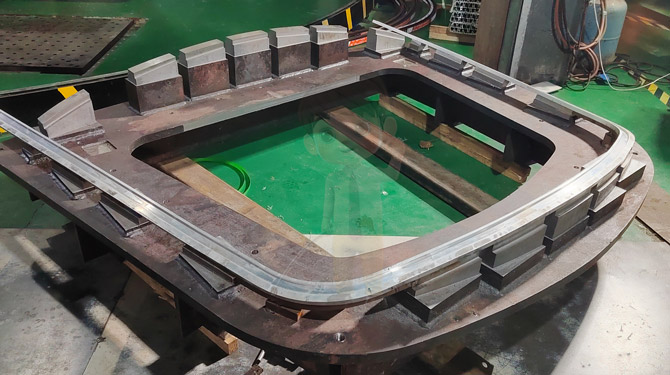The advancement and innovation of bending processing technology in China
Bending processing technology has become a cornerstone of modern manufacturing, playing a critical role in various industries, including automotive, aerospace, construction, and machinery. In recent years, China has emerged as a global leader in bending processing technology, driven by rapid industrialization, technological advancements, and a commitment to innovation. This article explores the advancements and innovations in bending processing technology in China, examining their impact on manufacturing efficiency, product quality, and industry competitiveness.
The evolution of bending processing technology in China can be traced back several decades. Initially, the country relied heavily on traditional methods and imported technologies. However, as China's manufacturing sector grew, so did its need for more efficient and precise bending techniques. The transition from manual processes to automated bending solutions marked a significant turning point, enabling manufacturers to enhance productivity and reduce human error.
Technological Advancements
1.CNC Bending Machines
One of the most significant advancements in bending processing technology is the development of Computer Numerical Control (CNC) bending machines. These machines allow for precise control over the bending process, enabling manufacturers to produce complex shapes and geometries with high accuracy. CNC technology has drastically reduced production times and improved consistency, making it a preferred choice for many manufacturers.
2.Hydraulic and Electric Bending Technologies
The introduction of hydraulic and electric bending technologies has revolutionized the industry. Hydraulic bending machines provide immense power and flexibility, allowing for the bending of thick materials. On the other hand, electric bending machines offer energy efficiency and lower operational costs, making them an attractive option for manufacturers focused on sustainability.
3.Material Innovations
Advances in material science have also contributed to the evolution of bending processing technology. The development of high-strength, lightweight materials, such as advanced alloys and composites, has expanded the possibilities for bending applications. Manufacturers can now create lighter and more durable products, which is particularly beneficial in industries like aerospace and automotive, where weight reduction is critical for performance and fuel efficiency.

Innovations in Process Techniques
1.Multi-Axis Bending
Multi-axis bending technology allows manufacturers to bend materials in multiple directions within a single operation. This innovation has streamlined production processes and minimized the need for secondary operations, leading to significant reductions in lead times and costs. It enables the production of complex components that were previously difficult or impossible to achieve with traditional bending methods.
2.Robotic Bending Systems
The integration of robotics into bending processing has further enhanced efficiency and precision. Robotic bending systems can operate continuously, perform complex bends with high repeatability, and adapt to varying production requirements. This flexibility is essential for manufacturers seeking to meet the demands of a rapidly changing market.
3.Real-Time Monitoring and Quality Control
The implementation of Internet of Things (IoT) technology in bending processing has enabled real-time monitoring and quality control. Sensors embedded in bending machines can track performance metrics, detect anomalies, and provide feedback to operators. This data-driven approach allows manufacturers to maintain high-quality standards, reduce waste, and optimize production processes.
The advancements and innovations in bending processing technology have had a profound impact on China's manufacturing landscape. With increased efficiency and precision, manufacturers can produce higher-quality products at lower costs. This has enhanced the competitiveness of Chinese manufacturers in the global market, enabling them to meet international standards and customer demands.
Moreover, these technological advancements have facilitated the growth of specialized industries, such as electric vehicles and renewable energy, where advanced bending techniques are essential for producing key components. As China's manufacturing capabilities continue to evolve, the emphasis on research and development in bending processing technology will remain crucial.
The advancement and innovation of bending processing technology in China reflect the country's commitment to becoming a global manufacturing powerhouse. Through the adoption of CNC machines, hydraulic and electric technologies, and the integration of robotics and IoT, Chinese manufacturers are setting new standards for efficiency, precision, and product quality. As the industry continues to evolve, it is clear that bending processing technology will play a pivotal role in shaping the future of manufacturing in China and beyond.
23
2025-06
Number of visitors:1
HOT NEWS
-
Reducing the rebound error of car bumper bending enhances the stability of mass production.
2025-12-17
-
High-precision bending processing service: Automated bending process
2025-12-08
-
High-Accuracy Curve Forming: Achieving Consistent Bends in Aluminum, Steel, and Alloy Materials
2025-11-27
-
Advanced CNC Tube Bending Technology: Achieving Consistent and Reliable Precision in Complex Shapes
2025-11-17




 English
English Chinese
Chinese Japan
Japan German
German

 LIST
LIST
